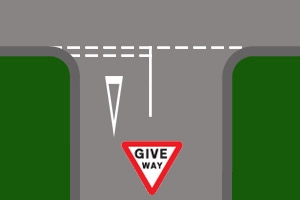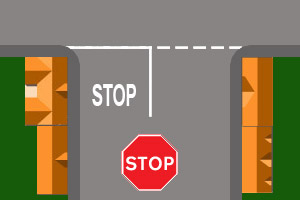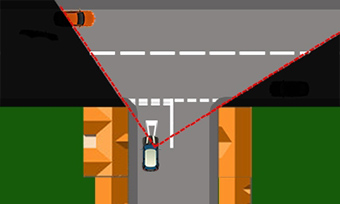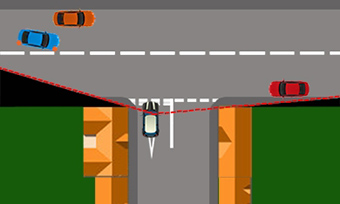A T-junction is where a minor road joins a major road. As a rule, the road going straight ahead, along the top of the 'T', has priority.
The minor road with either have a:
On your driving test, when dealing with a T-junction the examiner will expect you to:


T-Junctions on quieter roads may be unmarked and show no relevant road markings or signs.
However, most have either 'Give way' or 'Stop' signs. Look out for the signs and road markings as you approach the junction to identify which type it is.
Give way signs tell you you must give priority to traffic on the main road and stop if necessary to let it pass.
Stop signs tell you you must stop before the solid white line to assess the situation before joining the main road.
Junctions can be 'open' or 'closed.' At an 'open' junction, your line of sight into the major road will be fairly clear of obstructions allowing you to see other traffic. At 'closed' junctions - buildings, fences, hedges, etc will restrict your line of sight.
When you approach a T-junction, use the MSPSL routine. Approach the end of the road slowly enough to give yourself plenty of time to look into the main road. Whether the junction is 'open' or 'closed,' you must scan left and right so you can build up a picture of the traffic flow and other hazards on the main road.
This means joining a major road from a minor road. Your zone of vision will get wider as you approach the end of the road. As the diagrams show, you will not be able to decide if it is safe to emerge from the minor road until your eye line is level with any obstructions.
When you approach the end of the minor road, watch out for traffic that may turn in too soon and cut the corner. Large vehicles, such as lorries, may need more room to turn, so be prepared to hold back for them.
Always look left and right before emerging from the minor road. Be particularly careful turning left so that you will not put yourself into the path of any vehicle approaching from the left. The driver of the vehicle may be passing an obstruction and positioned in your intended path.


At a closed T-junction, you can't make a decision to emerge until your eyes are level with the obstructions.